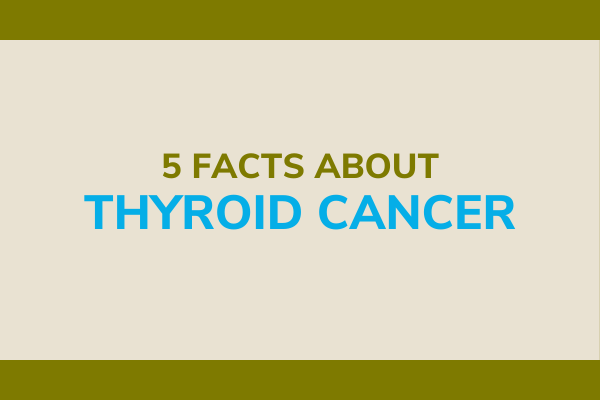Five Facts about Thyroid Cancer
The thyroid, a key part of the endocrine system, is a small gland at the base of your neck that produces a hormone that helps control your body’s metabolism. Thyroid cancer occurs when a cell in your thyroid undergoes mutation which cause the cells to grow and multiply rapidly. Amanda M. Laird, MD, FACS, chief of endocrine surgery at Rutgers Cancer Institute of New Jersey and associate professor of surgery at Rutgers Robert Wood Johnson Medical School, shares five facts about thyroid cancer everyone should know.
1. Thyroid cancer is the most common endocrine cancer.
The American Cancer Society estimates that approximately 44,280 new cases of thyroid cancer in both men and women will be diagnosed in the U.S. in 2021 with around 2,200 deaths. Fortunately, most types of thyroid cancer are very treatable and survivors live long, healthy lives.
2. While thyroid cancers are common, they may have few or no signs or symptoms.
The most common symptom of thyroid cancer is a painless lump or swelling that develops in the neck. Other symptoms only tend to occur after the condition has reached an advanced stage, which may include unexplained hoarseness or difficulty swallowing that does not go away.
3. There are several types of thyroid cancer.
There are four main types of thyroid cancer. Papillary thyroid cancer is the most common, develops from follicular cells, and usually grows slowly. Follicular thyroid cancer is the second most common and is treated similarly to papillary thyroid cancer. Least common forms of thyroid cancer are medullary thyroid cancer and anaplastic thyroid cancer. Medullary thyroid cancer develops from C cells in the thyroid gland and may occur as a result of an inherited genetic mutation. Lastly, anaplastic thyroid cancer is the least common, occurs rarely, and is an aggressive thyroid cancer.
4. Thyroid cancers occur about three times more often in women than in men.
The reason for this is unknown. Women also tend to develop these cancers at an earlier age (40s to 50s) than men (60s to 70s). A risk factor for developing thyroid cancer is exposure to radiation to the head and neck.
5. Major advances have allowed physicians to identify patients who may qualify for less extensive treatment of their thyroid cancer.
Traditionally, removal of the entire thyroid gland was necessary for patients with thyroid cancer followed by radioactive iodine (RAI) therapy. In more recent years, physicians have shifted towards less aggressive treatments for early-stage thyroid cancers including removal of only half of the thyroid gland to certain patients without RAI treatment. This allows for less extensive surgery and offers the potential to avoid taking a thyroid hormone replacement.
Source: RWJBarnabas Health, the Endocrine and Neuroendocrine Tumor Program at Rutgers Cancer Institute of New Jersey, September 2021.


